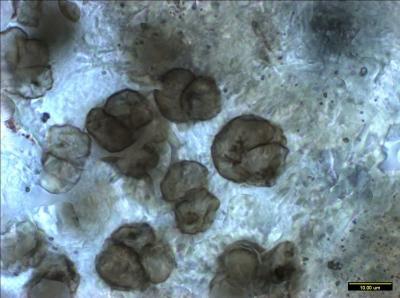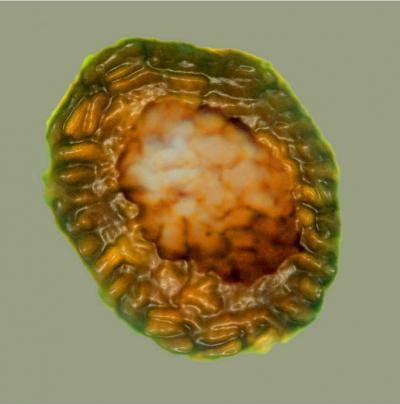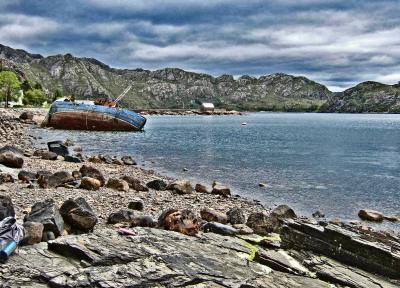Remote lochs along the west coast of Scotland are turning up new evidence about the origins of life on land.
A team of scientists exploring rocks around Loch Torridon have discovered the remarkably preserved remains of organisms that once lived on the bottom of ancient lake beds as long as a billion (1000 million) years ago.
These fossils illuminate a key moment in the history of evolution when life made the leap from tiny, simple bacterial (prokaryote) cells towards larger, more complex (eukaryotic) cells which would make photosynthesis and sexual reproduction possible.
The team, from Oxford University, the University of Sheffield and Boston College, report their findings in this week's Nature.
"These new fossils show that the move toward complex algal cells living in lakes on land had started over a billion years ago, much earlier than had been thought," said Professor Martin Brasier of Oxford University's Department of Earth Sciences, an author of the paper.
"These new cells differ from their bacterial ancestors in that they have specialised structures including a nucleus, as well as mitochondria and chloroplasts – which are vital for photosynthesis. They also undergo sexual reproduction, leading to much more rapid rates of evolutionary turnover."

These are cell pairs.
(Photo Credit: Oxford University/Martin Brasier)
Some of these ancient fossils are so finely ornamented, and so large and complex, that they are evidence for a surprisingly early start for the emergence of complex eukaryote cells on land. The researchers believe that it was from complex cells such as these that green algae and green land plants – everything from lettuce to larch trees – were able to evolve and colonise the land.
Dr Charles Wellman, Reader in Palaeobiology in the Department of Animal and Plant Sciences at the University of Sheffield, an author of the paper, said: "It is generally considered that life originated in the ocean and that the important developments in the early evolution of life took place in the marine environment: the origin of prokaryotes, eukaryotes, sex, multicellularity etc. During this time the continents are often considered to have been essentially barren of life - or at the most with an insignificant microbial biota dominated by cyanobacteria.
"We have discovered evidence for complex life on land from 1 billion year old deposits from Scotland. This suggests that life on land at this time was more abundant and complex than anticipated. It also opens the intriguing possibility that some of the major events in the early history of life may have taken place on land and not entirely within the marine realm."
Professor Brasier said: "It may even be that the sort of conditions found in the ancient lakes around Loch Torridon favoured a key step in this transformation, which involved the incorporation of symbiotic bacteria into the cell to form chloroplasts, rather than this occurring in the sea as usually envisaged."

This is a cluster of cells.
(Photo Credit: Oxford University/Martin Brasier)
Around 500 million years after the emergence of these complex cells, the surface of the land was starting to become covered in simple vegetation like lichens, mosses and liverworts, and the first animals were able to take their chance and leave the sea behind. These pioneers were followed by the first fish and ferns, reptiles and conifers, mammals and flowering plants – and, eventually, humans.
Professor Brasier adds: "None of this would have been possible without advances long ago made by these little microbes, now entombed within phosphate from the Torridon lakes. It was arguably these organisms that helped to turn our landscape from a harsh and rocky desert into a green and pleasant place."

This is the Loch Torridon shoreline.
(Photo Credit: Oxford University/Martin Brasier)
Source: University of Sheffield